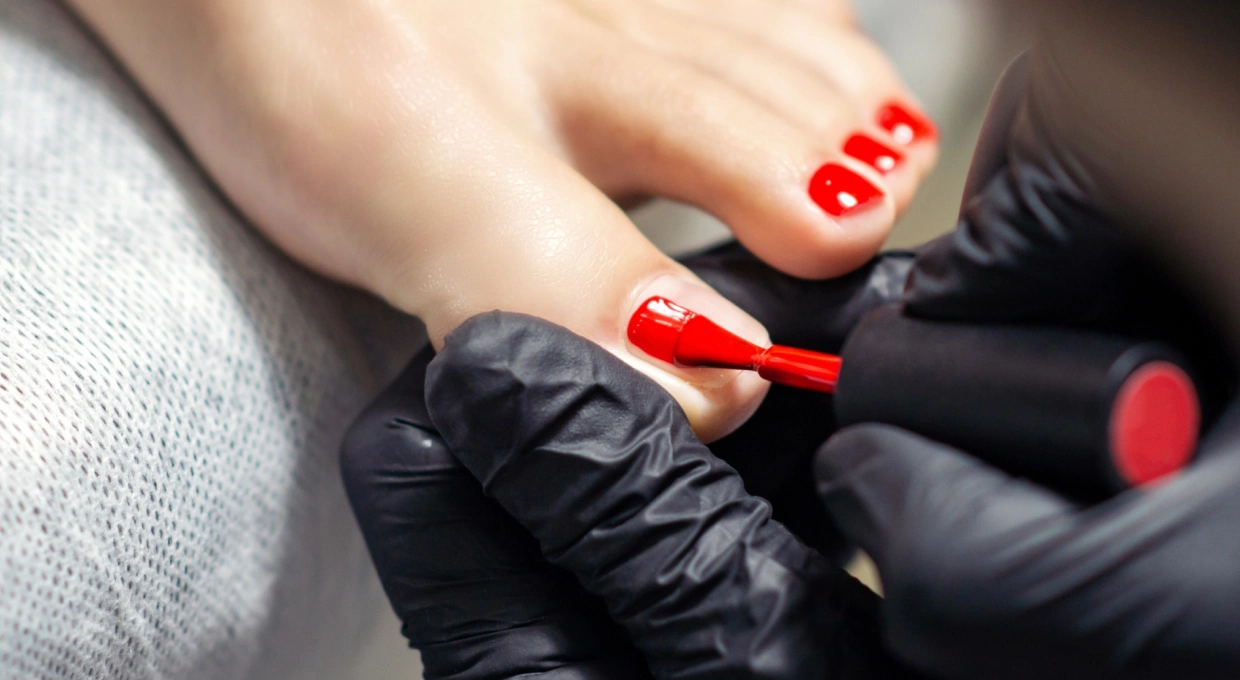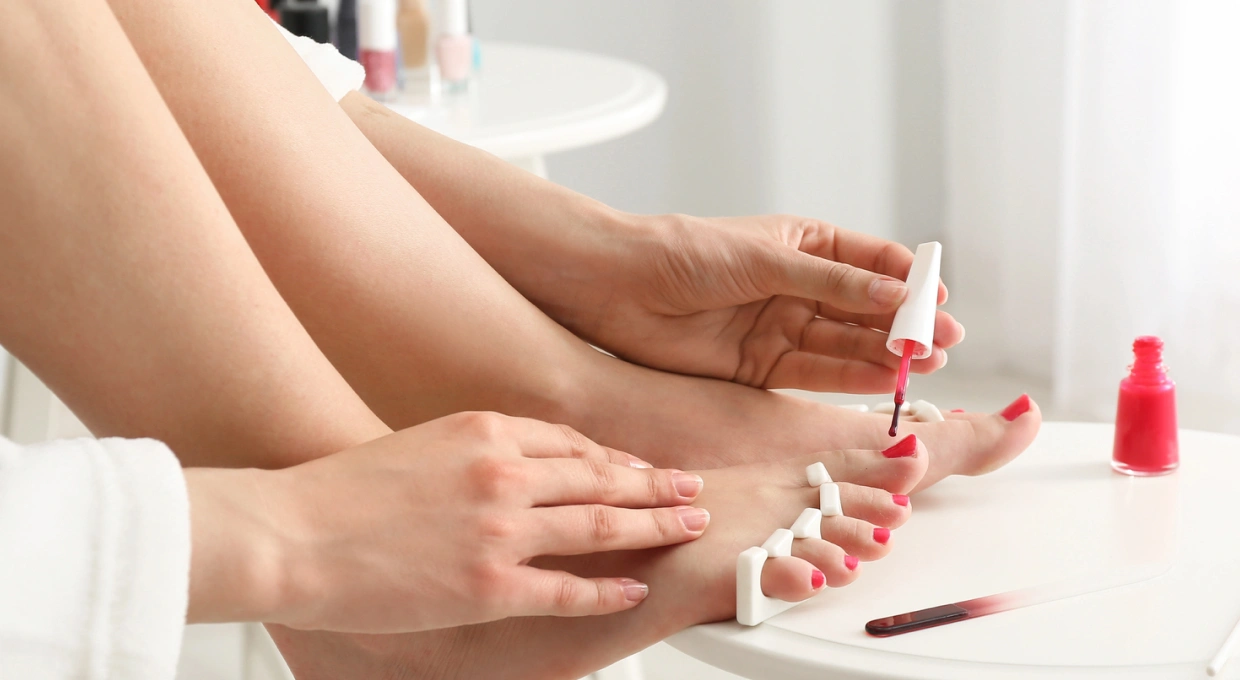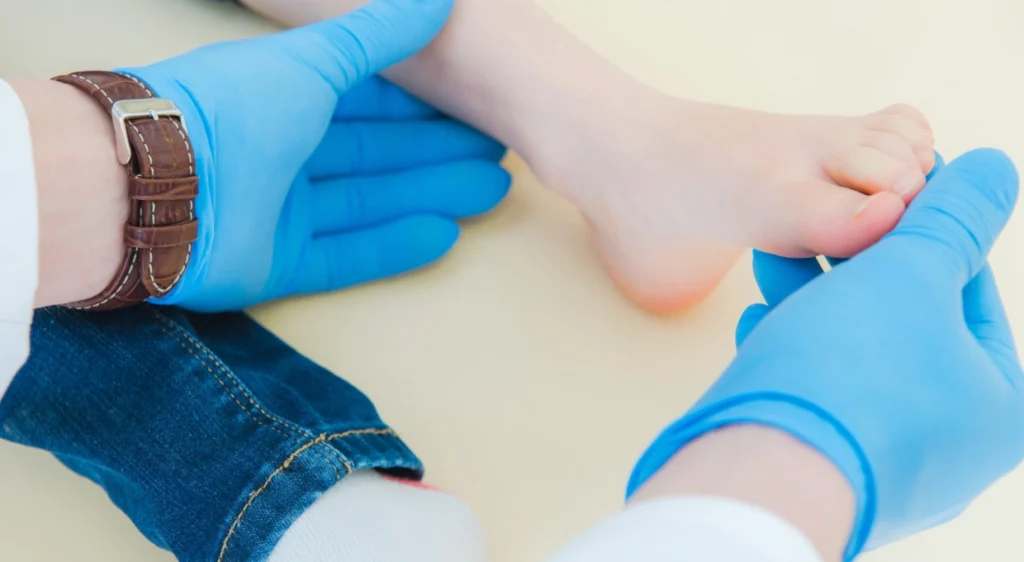Frequent use of nail polish on toenails is a common practice, especially during the summer or on special occasions. However, abuse of these products can have negative effects on nail health. It is essential to understand the associated risks in order to make informed decisions about their use.
What are nail polishes and how do they affect the nails?
Nail polishes are composed of a mixture of chemicals that, while they beautify the nails, can also cause damage if used excessively. These chemicals include solvents, resins, plasticizers, colorants and other additives that allow the polish to have an even texture, brilliant color and long life. 1. Dehydration of the nails: One of the most common effects of nail polish abuse is nail dehydration. The solvents present in polishes, such as ethyl acetate and butyl acetate, can dry out the nail surface, depriving it of its natural moisture. As a result, nails can become brittle, dull and prone to flaking. 2. Discoloration and stains: Prolonged and continuous use of nail polish, especially dark-colored polishes, can lead to discoloration of the nails. This occurs when the pigments in the polish penetrate the nail, causing yellow or brown staining. This discoloration can be difficult to remove and, in some cases, can be permanent if not properly treated. 3. Weakening of the nail structure: Constant application of nail polish and, moreover, frequent removal with nail polish remover, can weaken the keratin in the nail, which is the protein that gives it strength and structure. This weakening causes the nails to become thinner and more susceptible to breakage and fracture. In addition, the use of hardening polishes, although it may seem like a solution, can actually exacerbate the problem by causing excessive stiffness in the nail. 4. Infections and fungi: Overuse of nail polish can also create an environment conducive to the proliferation of fungal infections. Successive layers of polish create a barrier that prevents the nail from breathing, trapping moisture and heat, which encourages fungal growth. If the nails have a previous injury, the risk of infection increases considerably.
Tips for the responsible use of nail polish

To maintain healthy nails, it is important to follow certain recommendations when using nail polish: 1. Let your nails rest: It is essential to allow the nails to “breathe” between polish applications. It is recommended to leave the nails unpolished for at least one week every month to allow them to recover and regenerate. 2. Use of toxic-free enamels: Opting for glazes that are free of the so-called “toxic 5” (formaldehyde, toluene, dibutyl phthalate, formaldehyde resin and camphor) can reduce the risk of damage. These ingredients are known to be irritating and potentially hazardous to health. 3. Regular hydration: Keeping the nails and surrounding skin hydrated is key to preventing dehydration. The use of specific nail oils, as well as moisturizing creams, can help maintain the flexibility and health of the nail. 4. Avoid excessive use of nail polish remover: Nail polish remover, especially those containing acetone, is extremely dehydrating. Its use should be limited and milder alternatives should be chosen whenever possible.
Consult a specialist
If you have already experienced adverse effects from excessive nail polish use, such as persistent discoloration, significant weakness or signs of infection, it is important to consult a podiatrist or dermatologist. These professionals can provide an accurate diagnosis and an appropriate treatment plan, which could include anything from changes in nail care habits to topical treatments or medications.
Conclusion
Nail polish can be a beauty ally, but excessive or improper use can have serious consequences for toenail health. Maintaining a proper care routine, giving your nails time to recover and opting for quality products are essential measures to prevent problems. If you notice changes in the appearance or health of your nails, do not hesitate to seek the advice of a specialist to avoid further complications.



